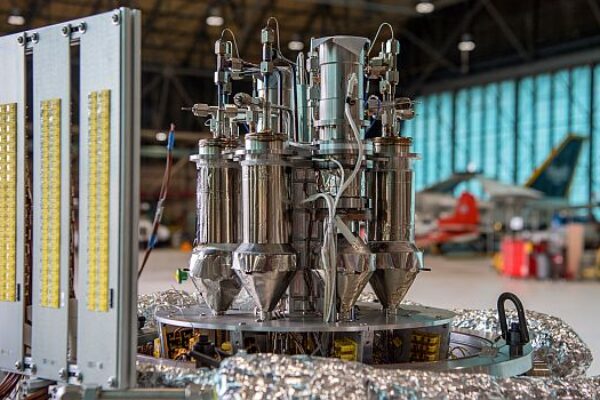
NASA tests tiny nuclear power system for future space missions
The system is being developed under NASA’s Kilopower reactor project, a program designed to create small nuclear power sources to provide energy for future human and robotic missions in space and on the surface of Mars, the moon, or other solar system destinations. NASA reports that non-nuclear tests have recently been completed on a prototype reactor at a Nevada facility and that it is now operating with a real nuclear reactor core.
Reliable and efficient power is seen as a key enabling technology for future space missions. Such a power source is not only essential for day-to-day necessities, but for achieving mission objectives – such as running experiments and providing fuel for transportation needs – as well.
“Mars is a very difficult environment for power systems,” says Steve Jurczyk, associate administrator of NASA’s Space Technology Mission Directorate. “[It has] less sunlight than Earth or the moon, very cold night-time temperatures, and very interesting dust storms that can last weeks and months that engulf the entire planet. So Kilopower’s compact size and robustness allows us to deliver multiple units on a single lander to the surface that provides tens of kilowatts of power.”
According to NASA, the Kilopower space fission power system could provide up to 10 kilowatts of electrical power – enough to run two average households – continuously for at least ten years. Four such power units would provide enough power to establish an outpost.
The prototype power system was designed and developed by NASA in collaboration with the Los Alamos National Laboratory, while the reactor core was provided by the Y12 National Security Complex. The prototype power system was shipped to the Nevada National Security Site (NNSS) last September, where researchers recently began tests on the uranium-235 reactor core, which is approximately the size of a paper towel roll.
The team will connect the power system to the core and begin end-to-end checkouts this month, NASA says. The experiments are expected to conclude with a full-power test lasting approximately 28 hours in late March.
Related articles:
NASA studying solar electric propulsion
NASA exploring five greener aviation technologies
Power scavenging robot ‘squid’ to explore extraterrestrial oceans
NASA sensor to study tiny space debris around ISS
iPhone powered by gas, coal, body fat … nuclear?
 If you enjoyed this article, you will like the following ones: don't miss them by subscribing to :
eeNews on Google News
If you enjoyed this article, you will like the following ones: don't miss them by subscribing to :
eeNews on Google News




